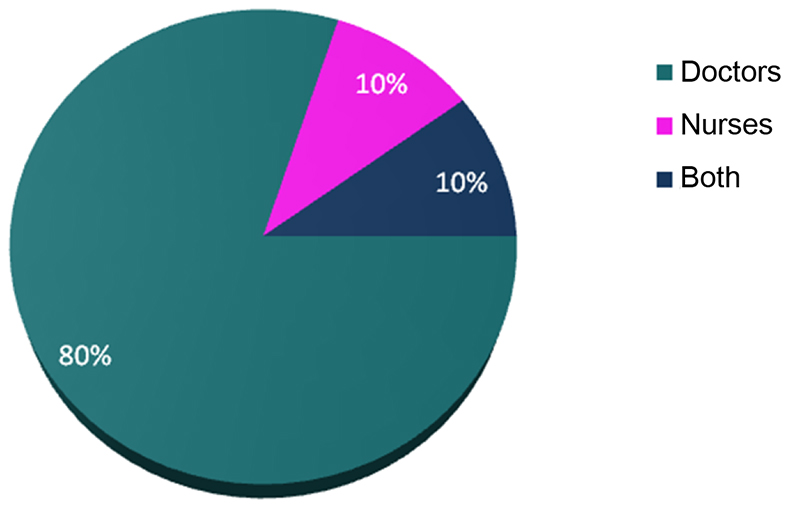Volume 31, Nº 3, May and June 2018
DOI: http://www.dx.doi.org/10.5935/2359-4802.20180008
REVIEW ARTICLE
Accuracy of Impedance Cardiography in Acute Myocardial Infarction: A Literature Review
Lucelia dos Santos Silva
Fernanda Faria Reis
Monyque Evelyn Santos Silva
Dalmo Valerio Machado de Lima

Chart 2 - Distribution of articles according to the author's professions.
Abstract
Hemodynamic monitoring of individuals with acute myocardial infarction, for evaluation of progression and prognosis of the patient’s clinical picture, has been studied for years.
The Swan-Ganz catheter is an invasive hemodynamic monitoring measurement, indicated for clinical situations, such as acute heart failure (e.g. acute myocardial infarction, complicated by progressive hypotension or cardiogenic shock); mechanical complications of acute myocardial infarction; right ventricular infarction; refractory congestive heart failure; pulmonary hypertension.1
Although there are indications, there is no consensus among them, since there is an enormous amount of work published on the clinical use of the Swan-Ganz catheter, but with doubtful methodology, allowing controversies regarding its true indications. Moreover, some authors have even published test results correlating the use of the Swan-Ganz catheter with increased mortality.1,2
Keywords: Myocardial Infarction / physiopathology; Data Accuracy; Hemodynamics; Cardiography, Impedance; Electric Impedance.











